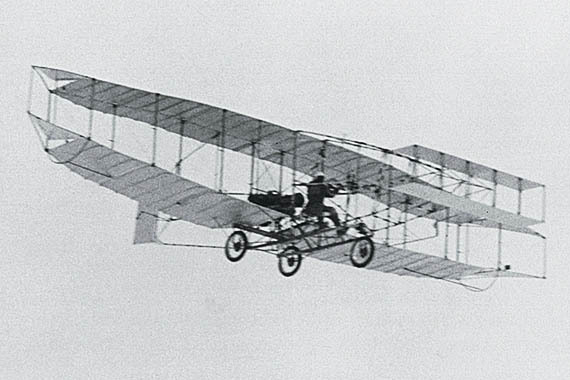
The Silver Dart in flight. [Wikimedia]
In 1907, Alexander Graham Bell, along with engineers J.A.D. (Douglas) McCurdy and Frederick Baldwin and two Americans, formed the Aerial Experiment Association with the financial support of Bell’s wife, Mabel. Their goal was “to get a man into the air.” Two years later, one of their creations was ready.
Set to take off from Bras d’Or Lake near Baddeck Bay, N.S., that February, volunteers on skates readied the aircraft for departure, and with McCurdy at the controls the Silver Dart rose nine metres off the ground and flew one and a half kilometres at a speed of 65 km/h. The following day McCurdy flew nearly six and a half kilometres.
Catching the interest of the Department of Militia and Defence as potentially having a military application, the Silver Dart made four demonstration flights in Petawawa, Ont., in August 1909. But the biplane was wrecked during the final flight, and the department decided to put an aerial division on hold.
Even when McCurdy proposed the idea of forming a Canadian air force at the outbreak of the First World War, the possibility was hindered by the department’s narrow foresight. Though the war appeared to prove the potential in military aviation, it would be several years and various iterations before the RCAF was created in 1924.
Advertisement





















